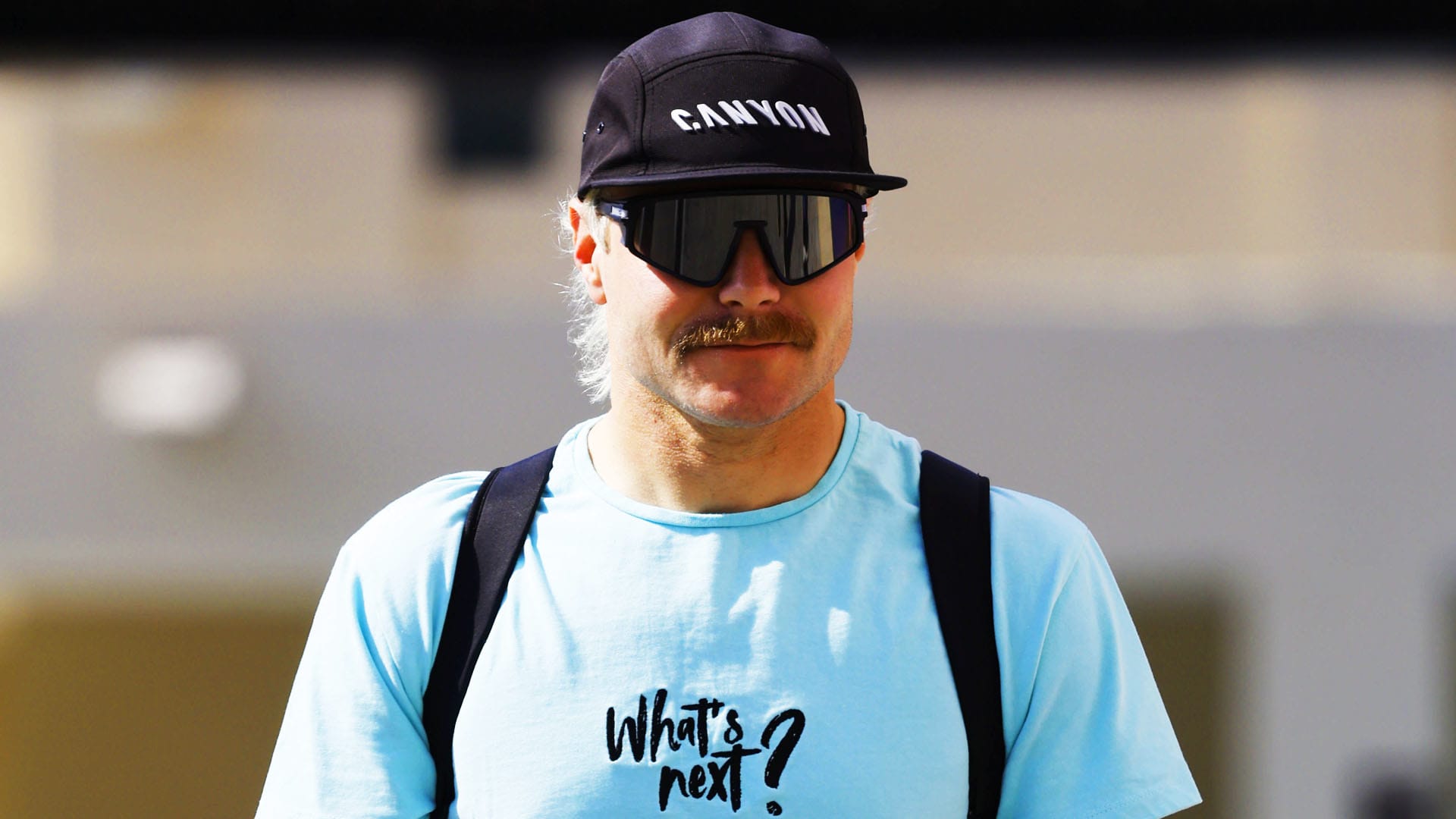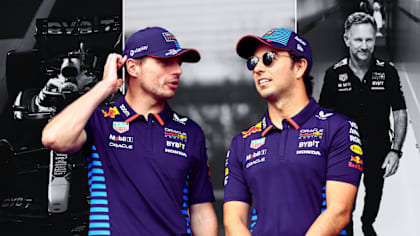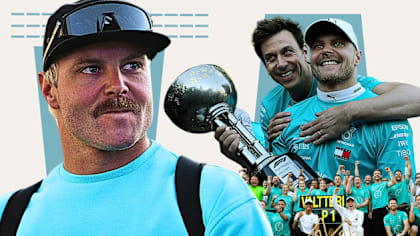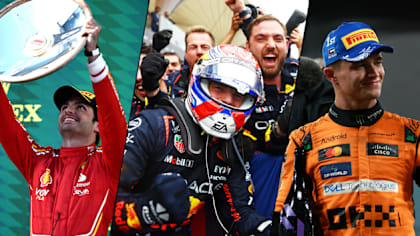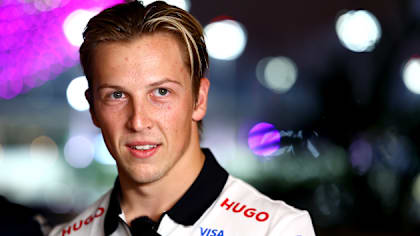
Feature
STRATEGY GUIDE: What are the possible race strategies for the 2022 Belgian Grand Prix?

Share

Formula 1 is finally back after the mid-season break – and it’s back with a bang as the top two in the championship will start well down the order thanks to a raft of grid penalties. So ahead of the race, let’s take a look at the different strategic options available to the teams in Belgium.
What’s the quickest strategy?
It took a while for everyone to get a read on the tyres this weekend due to the tricky weather on Friday, when the two practice sessions took place in damp conditions.
So it was only FP3 that offered a small look at the degradation and tyre performance levels on high fuel during long runs, which showed a one-stop strategy to be possible but the soft tyre to be a potential headache for some teams.
That’s because the soft was showing slightly higher levels of degradation than Pirelli had expected, while graining was only a slight issue. Averaged out across all of the teams, the one-stopper is still quickest but includes a potentially challenging first stint on the softs.
The soft is preferred because it will offer the quickest warm-up in what are forecast to be cool conditions once again, with a first stint of between 16-22 laps before switching to the medium compound for the second half of the race.
To get the softs to last that long on high fuel could be difficult for some teams that suffer from higher degradation, though…

How about a different option for the top 10?
So for anyone who thinks they might struggle to make the softs last long enough at the start of the race, the next quickest strategy is a two-stopper. Usually it’s a clear choice between one or two stops, but at Spa-Francorchamps overtaking is not as difficult as at some venues and therefore track position is less valuable.
A first stint on softs would still need to be at least 10 laps long before switching to the medium compound, ticking the box of using two different compounds and leaving the final stint open to two options. The quicker of the two looks like being two stints of equal length – around 15 laps – on the mediums.
A variation of that strategy would be to start on the medium compound and run longer in the first part of the race before fitting softs for the middle stint, getting more life out of the tyres on a lower fuel load before returning to the mediums for the closing stages.
Two-stopping using the medium tyre for two of the three stints is open to all of the drivers on the grid, with everyone carrying two sets of mediums through into the race, and only the Aston Martin drivers (who put them through a heat cycle) and Nicholas Latifi having any used sets.
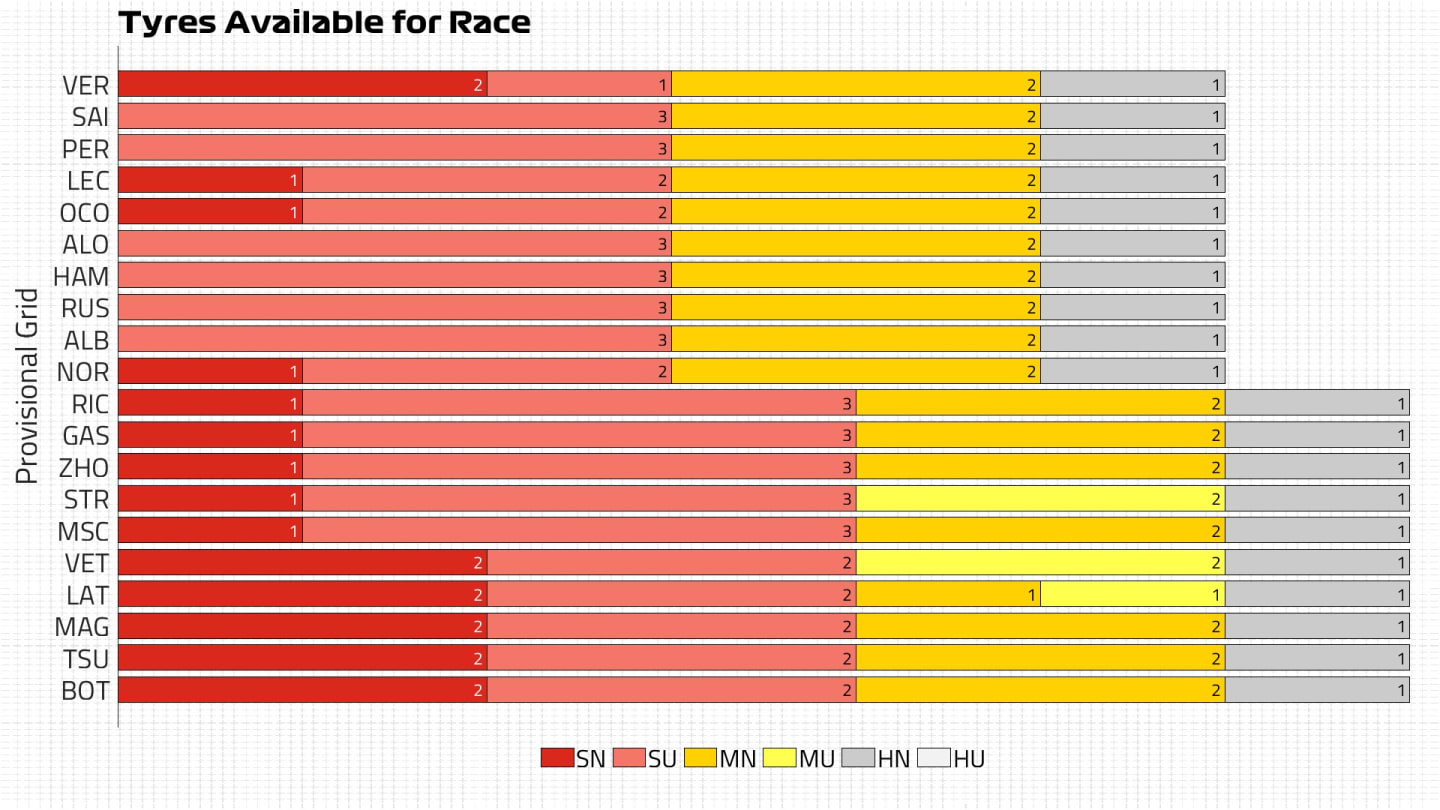
What are the options for the bottom half of the field?
For a further variation of the two-stop strategy, some drivers can consider using softs on two occasions. It’s strange to include him in the “bottom half of the field” section, but Max Verstappen has that particular strategy open to him after saving two new sets of softs by only completing one run in Q3 – when he ended up comfortably quickest but has a grid penalty that sees him start 15th.
All of the drivers who dropped out in Q1 – Sebastian Vettel, Latifi, Kevin Magnussen, Yuki Tsunoda and Valtteri Bottas – all also have two sets of softs and can consider that option.
FACTS AND STATS: A best Spa start for Alonso for 15 years, as Verstappen looks to the history books
There are two other one-stop options that are open to consideration but they require drivers to use the hard compound that is particularly tough to warm up in this weekend’s conditions.
Starting on the softs for maximum performance in the opening stint, a 10-lap run would be sufficient to open up a pit window to fit hards until the end of the race.

While the hards are fine in terms of wear life, the bigger challenge in this case is the fact that temperatures become tougher to get into the tyres as they wear, meaning drivers will have to work to keep the hardest compound in the right operating window.
To counteract that issue, starting on the medium compound would open up a longer first stint of up to 24 laps before switching to the hards, while also leaving a wider pit window that could look to take advantage of any early Safety Car period, as many teams did in 2020.
EXPLAINED: Which drivers have grid penalties for the 2022 Belgian Grand Prix
On that occasion, the majority of the field – including 11 of the top 13 and all of the top five – started on either softs or mediums but switched to hards under the Safety Car that started on Lap 10 and ended on Lap 14, making it to the end without stopping again.
The medium-hard strategy might be more attractive to one of the frontrunners who don’t have any new sets of softs remaining too, specifically the top six of Carlos Sainz, Sergio Perez, Fernando Alonso, Lewis Hamilton, George Russell and Alex Albon.

Wait, but what’s the weather doing?
After a scorching hot Thursday when the paddock was first active with media duties, the temperature has dropped massively and didn’t exceed 17C on Saturday for FP3 and qualifying.
The race is set to take place in slightly warmer conditions, with a clearer day and sunshine expected to see temperatures creeping into the 20s.
The sunshine should help track temperatures climb more than on Saturday too, but it’s still cooler than many venues see and will make the hard compound – the C2 – a challenge, and put most teams off from considering using it at the start.
The risk of rain is also remarkably low for Spa-Francorchamps, but to rule it out completely would be foolish at a track that has regularly seen wet weather impact running.
YOU MIGHT ALSO LIKE
Feature END OF YEAR REPORT: Red Bull – A fourth consecutive title for Verstappen, but constructors’ champions no more
Feature ANALYSIS: Why Bottas' return to Mercedes makes perfect sense for both sides
Feature Our writers pick their best drivers and favourite stories from 2024 – and who needs to up their game in 2025
News Lawson confirmed as Verstappen's Red Bull team mate for 2025
